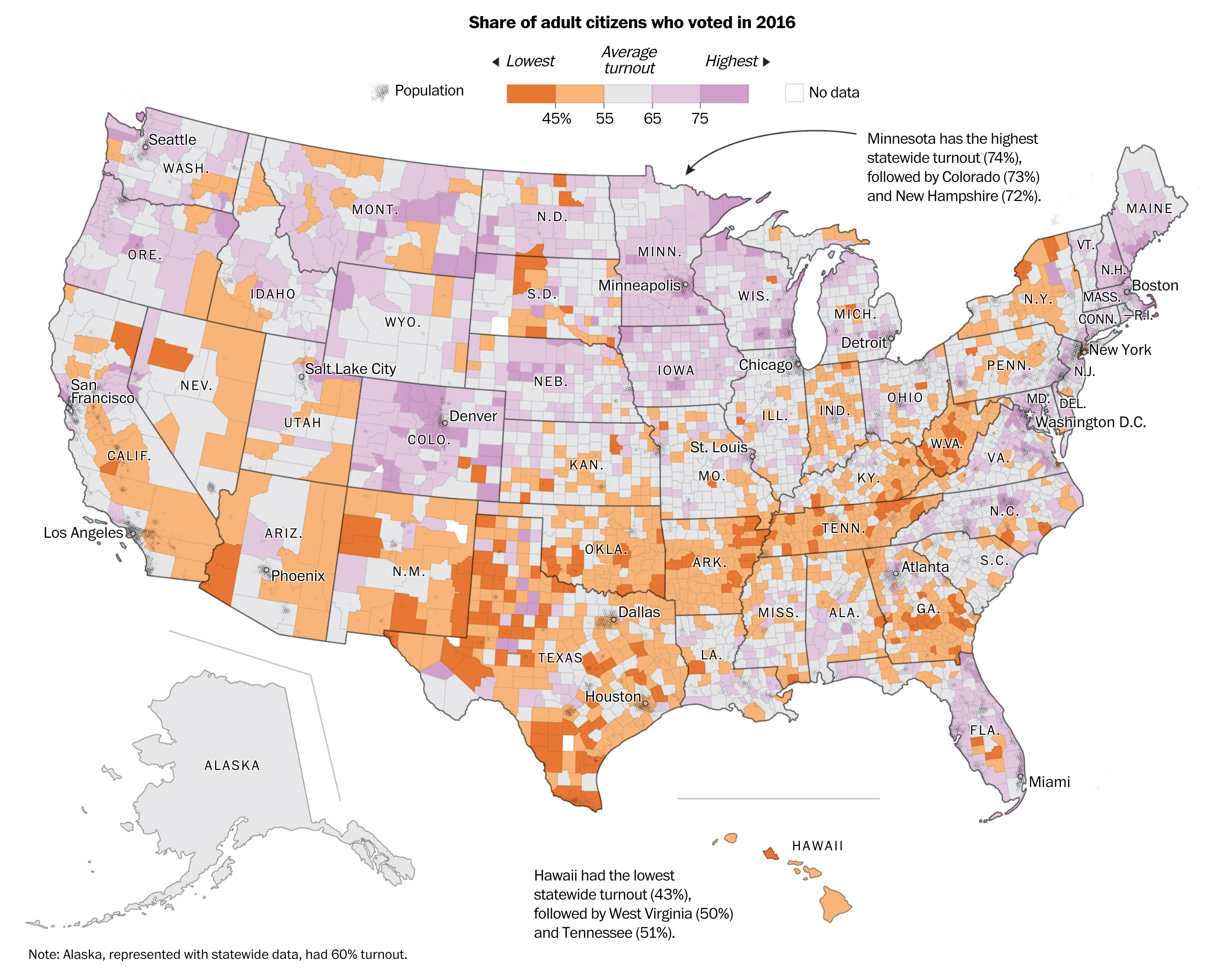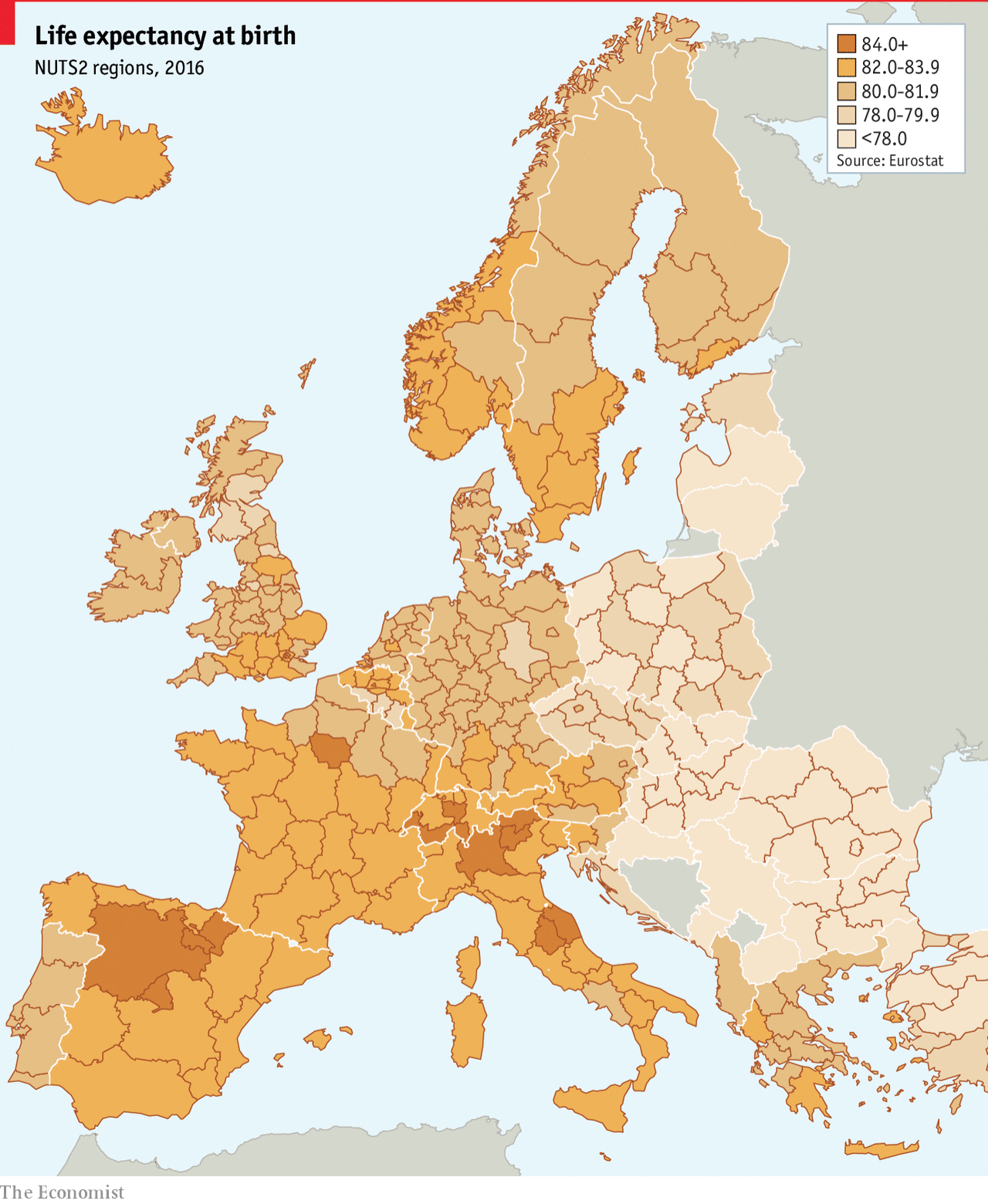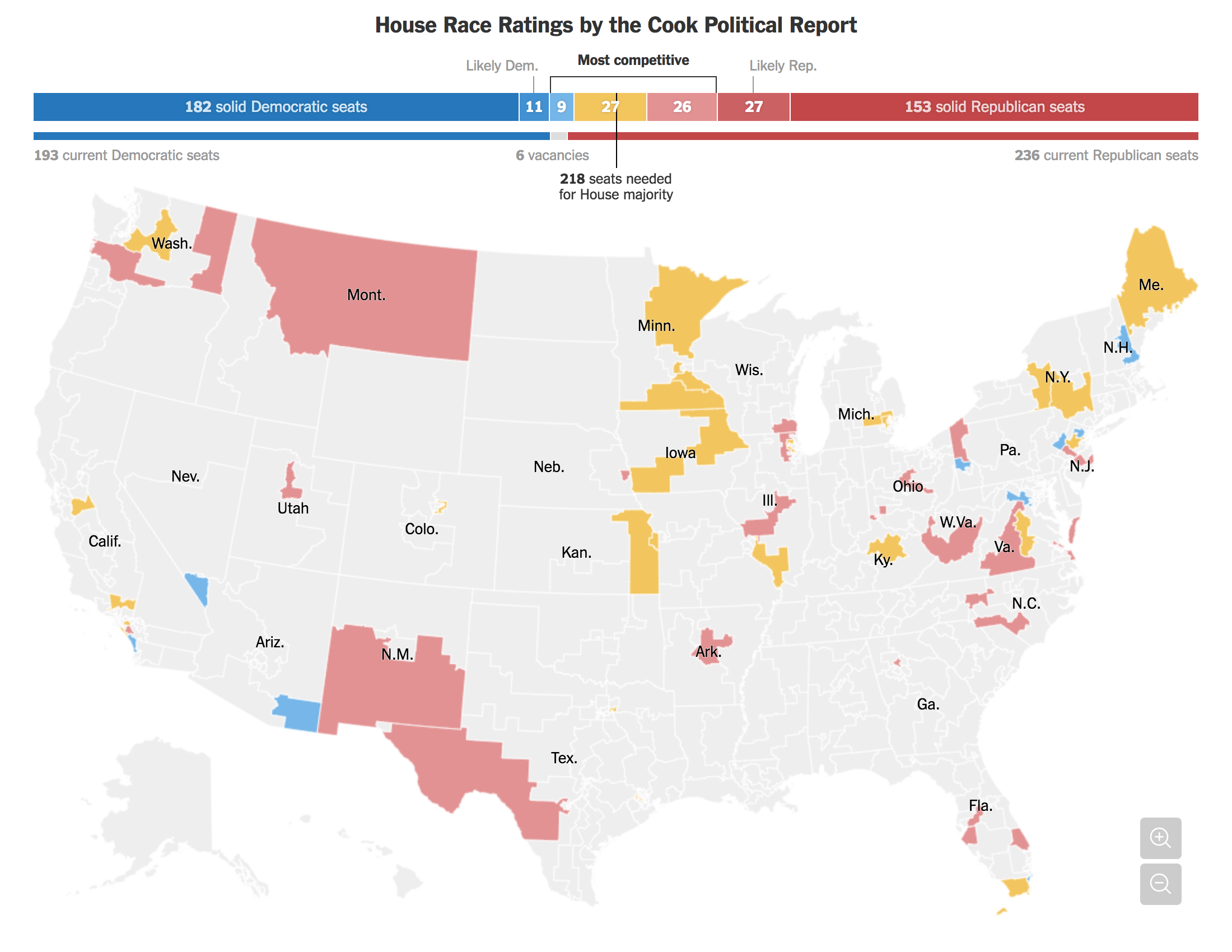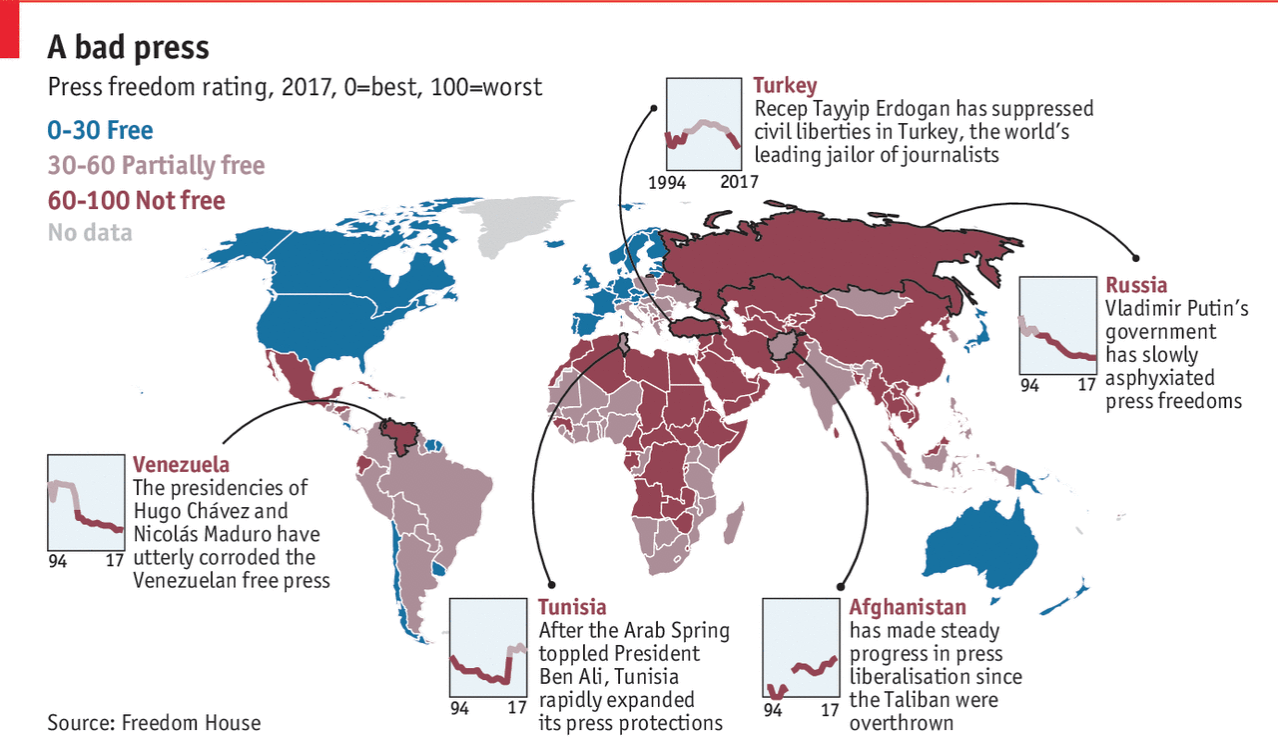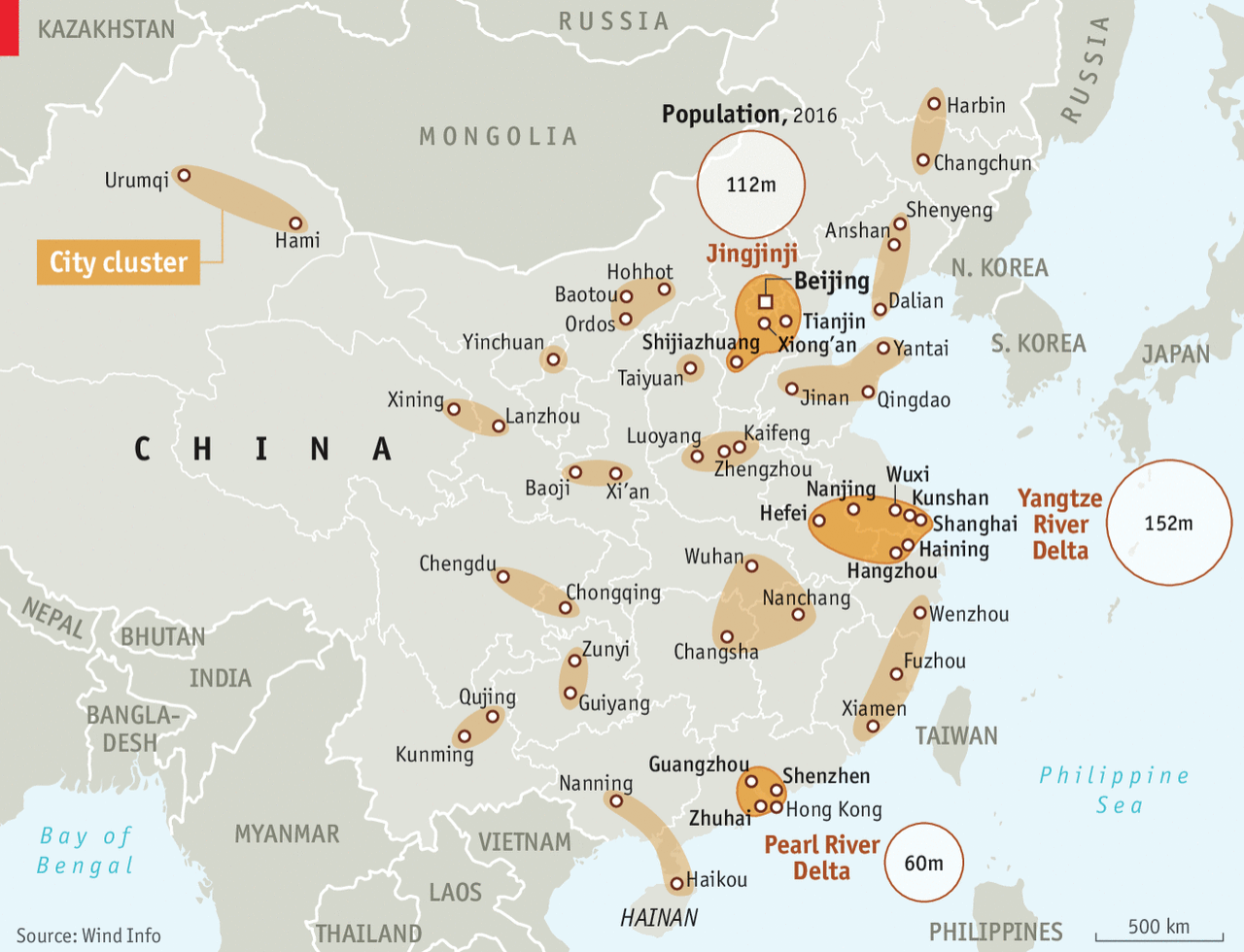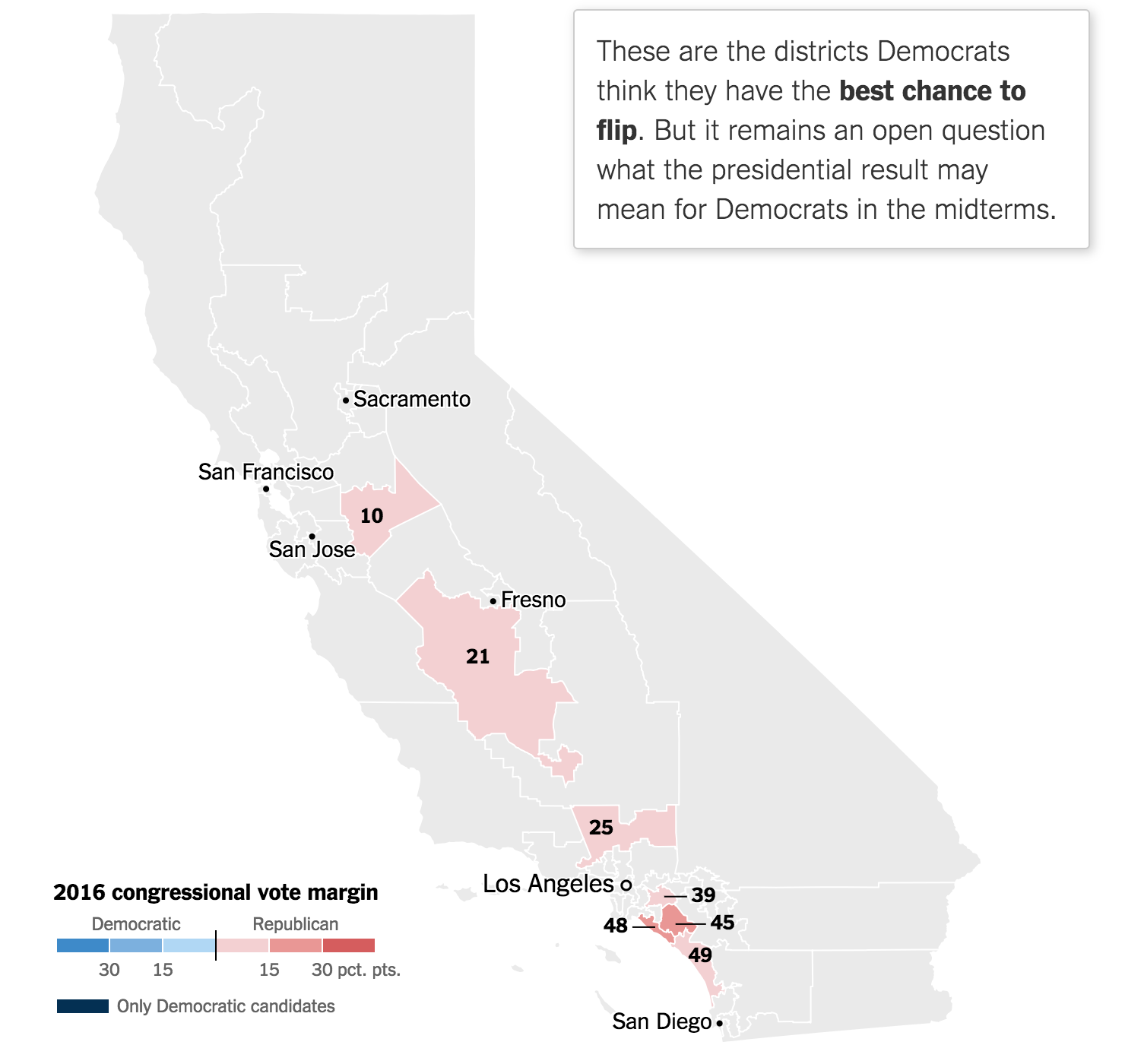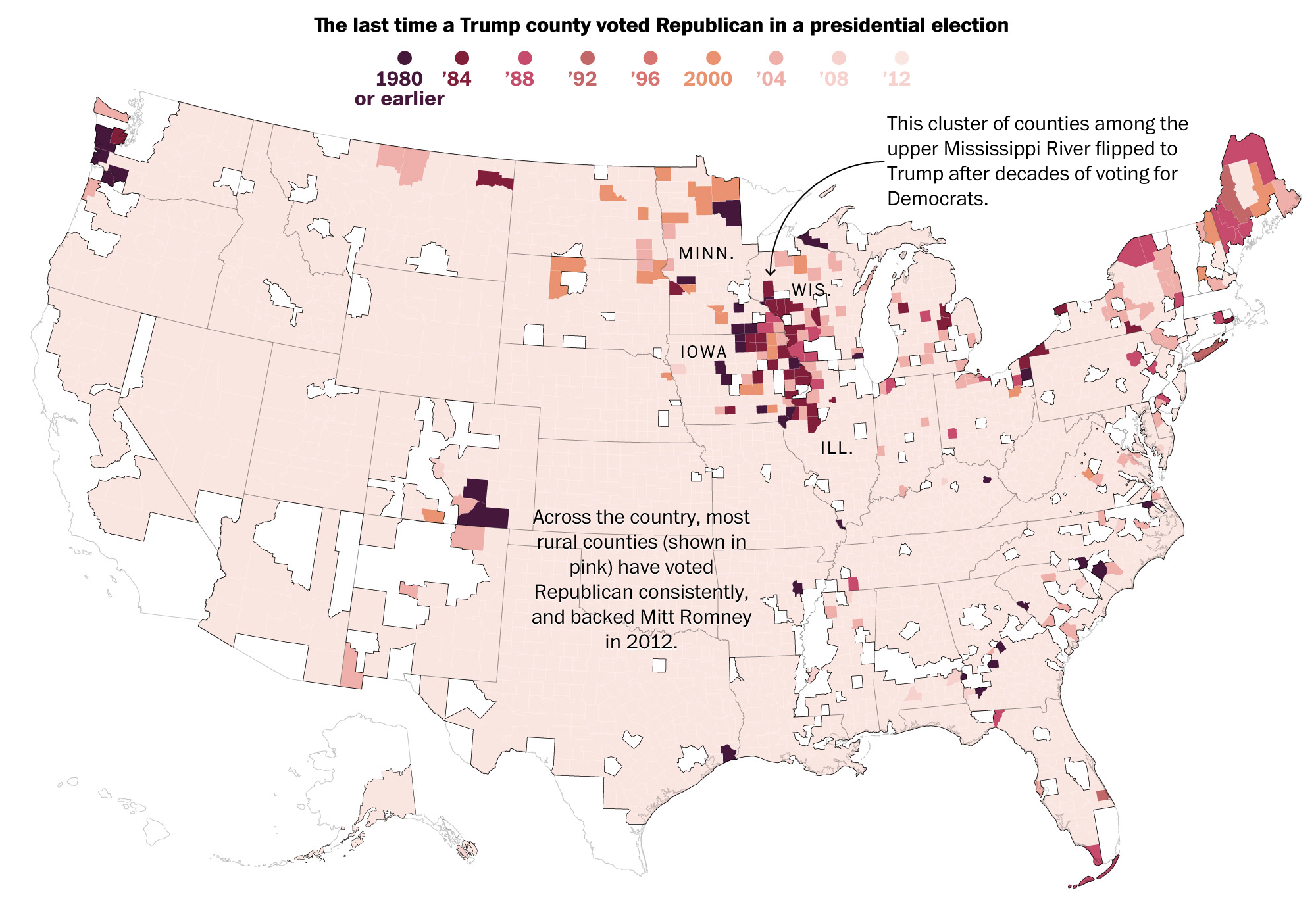The 2018 midterm elections are finally here. Thankfully for political nerds like myself, the New York Times homepage had a link to a guide of when what polls close (as early as 18.00 Eastern).
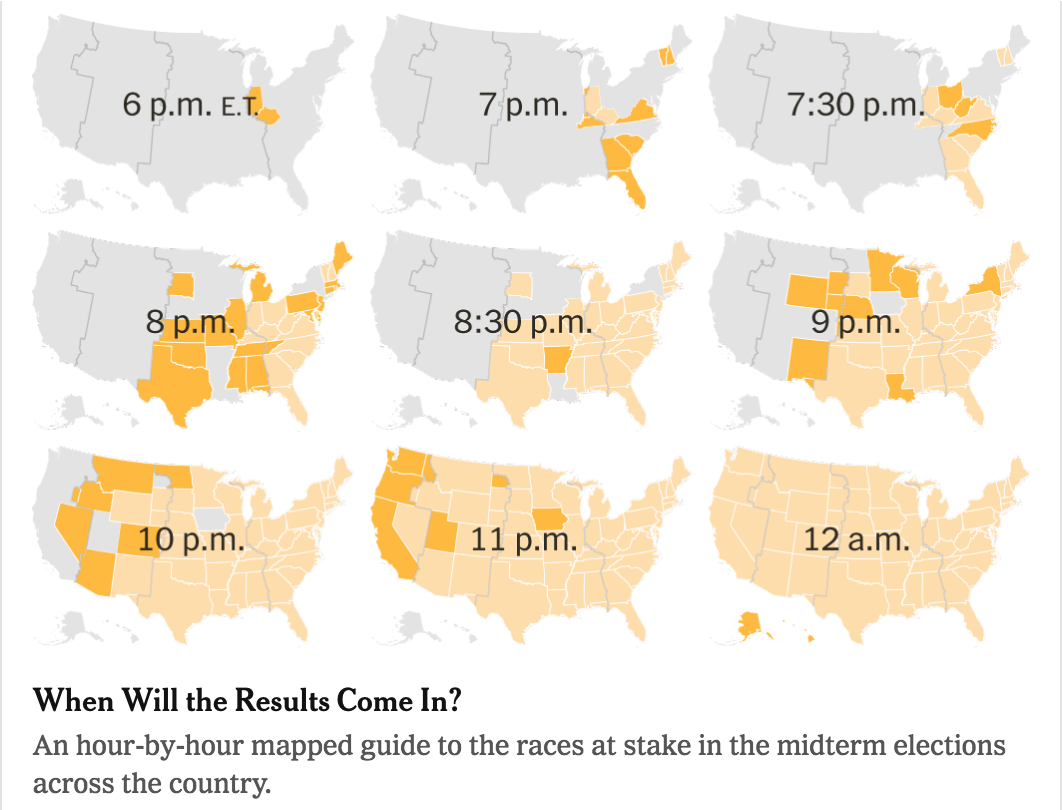
It makes use of small multiples to show when states close and then afterwards which states have closed and which remain open. It also features a really nice bar chart that looks at when we can expect results. Spoiler: it could very well be a late night.
But what I really wanted to look at was some of the modelling and forecasts. Let’s start with FiveThirtyEight, because back in 2016 they were one of the only outlets forecasting that Donald Trump had a shot—although they still forecast Hillary Clinton to win. They have a lot of tools to look at and for a number of different races: the Senate, the House, and state governorships. (To add further interest, each comes in three flavours: a lite model, the classic, and the deluxe. Super simply, it involves the number of variables and inputs going into the model.)
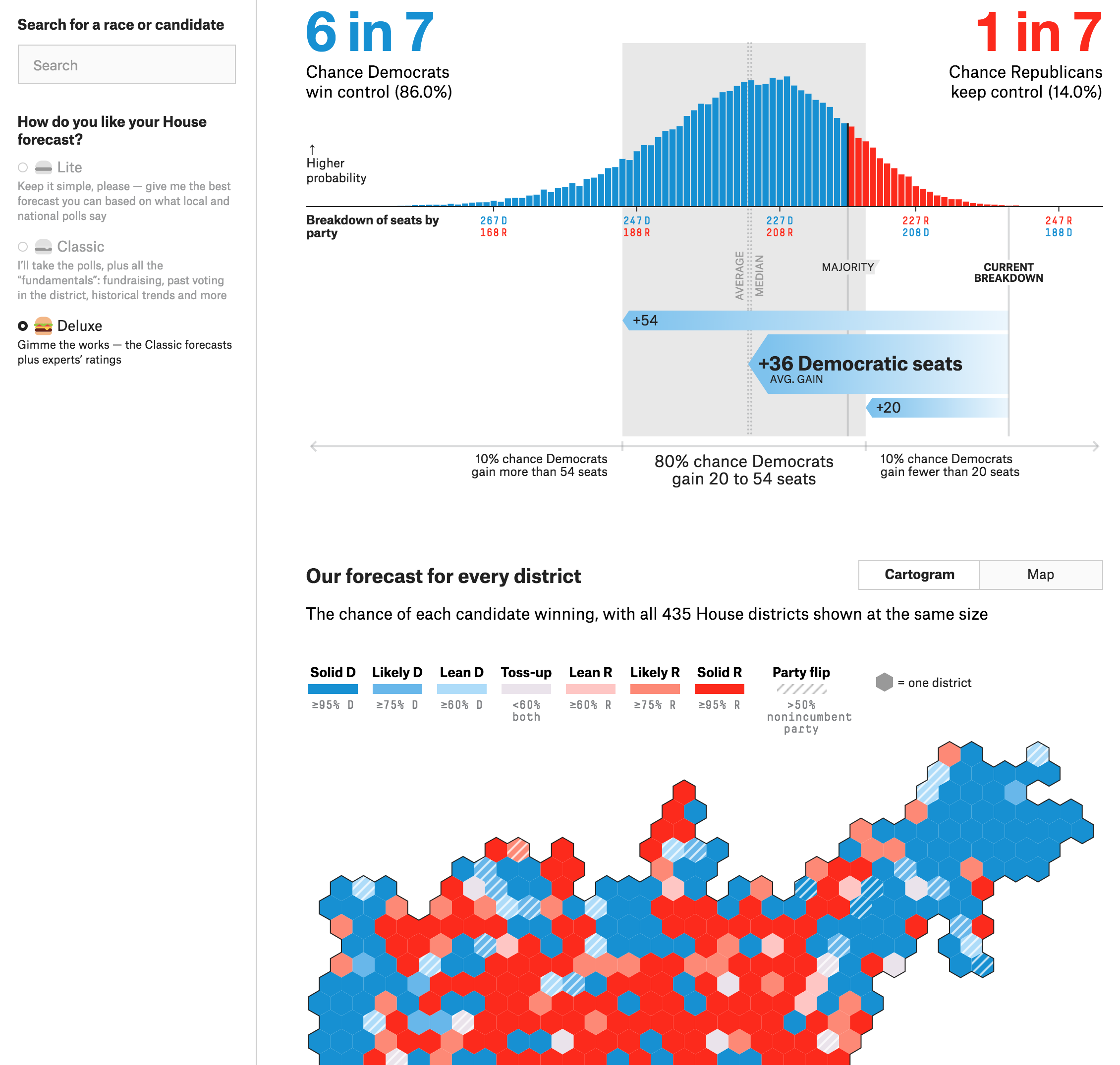
The above looks at the House race. The first thing I want to point out is the control on the left, outside the main content column. Here is where you can control which model you want to view. For the whimsical, it uses different burger illustrations. As a design decision, it’s an appropriate iconographic choice given the overall tone of the site. It is not something I would have been able to get away with in either place I have worked.
But the good stuff is to the right. The chart at the top shows the percentage of likelihood of a particular outcome. Because there are so many seats—435 are up for vote—every additional seat is between almost 0 and 3%. But taken in total, the 80% confidence band puts the likely Democratic vote tally at what those arrows at the bottom show. In this model that means picking up between 20 and 54 seats with a model median of 36. You will note that this 80% says 20 seats. The Democrats will need 23 to regain the majority. A working majority, however, will require quite a few more. This all goes to show just how hard it will be for the Democrats to gain a workable majority. (And I will spare you a review of the inherent difficulties faced by Democrats because of Republican gerrymandering after the 2010 election and census.) Keep in mind with FiveThirtyEight’s model that they had Trump with a 29% chance of victory on Election Day 2016. Probability and statistics say that just because something is unlikely, e.g. the Democrats gaining less than 20 seats (10% chance in this model), it does not mean it is impossible.
The cartogram below, however, is an interesting choice. Fundamentally I like it. As we established yesterday, geographically large rural districts dominate the traditional map. So here is a cartogram to make every district equal in size. This really lets us see all the urban and suburban districts. And, again, as we talked about yesterday, those suburban districts will be key to any hope of Democratic success. But with FiveThirtyEight’s design, compared to City Lab’s, I have one large quibble. Where are the states?
As a guy who loves geography, I can roughly place, for example, Kentucky. So once I do that I can find the Kentucky 6th, which will have a fascinating early closing race that could be a predictor of blue waviness. But where is Kentucky on the map? If you are not me, it might be difficult to tell. So compared to yesterday’s cartogram, the trade-off is that I can more easily see the data here, but in yesterday’s piece I could more readily find the district for which I wanted the data.
Over on the Senate side, where the Democrats face an even more uphill battle than in the House, the bar chart at the top is much clearer. You can see how each seat breakdown, because there are so fewer seats, has a higher percentage likelihood of success.
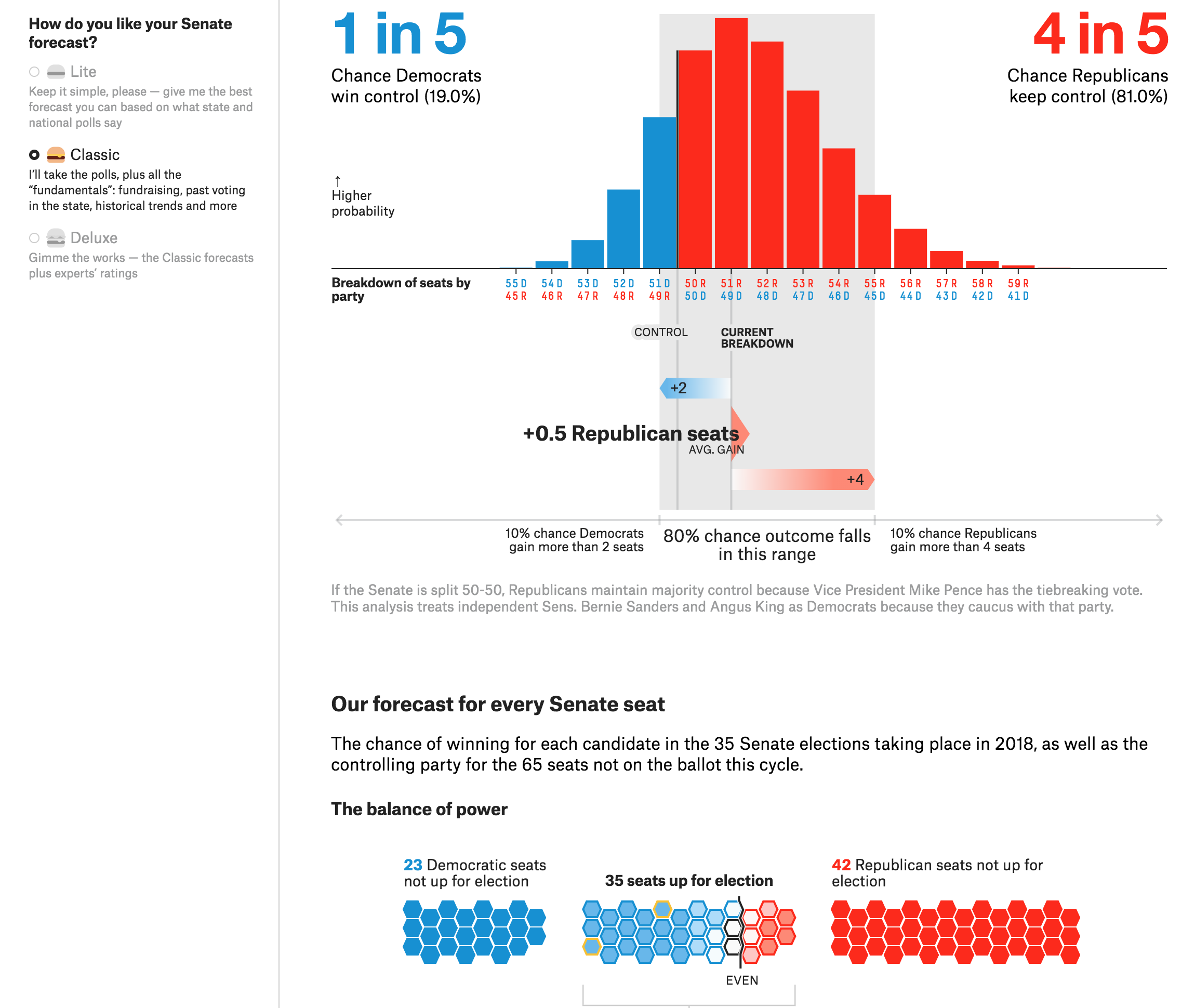
The take away? Yeah, it looks like a bad night for the Democrats. The only question will be how bad does it go? A good night will basically be the vote split staying as it is today. A great night is that small chance—20%, again compared to Trump’s 29% in 2016—the Democrats narrowly flip the Senate.
Below the bar chart is a second graphic, a faux-cartogram with a hexagonal bar chart of sorts sitting above it. This shows the geographic distribution of the seats. And you can quickly understand why the Democrats will not do well. They are defending a lot more seats in competitive states than Republicans. And a lot of those seats are in states that Trump won decisively in 2016.
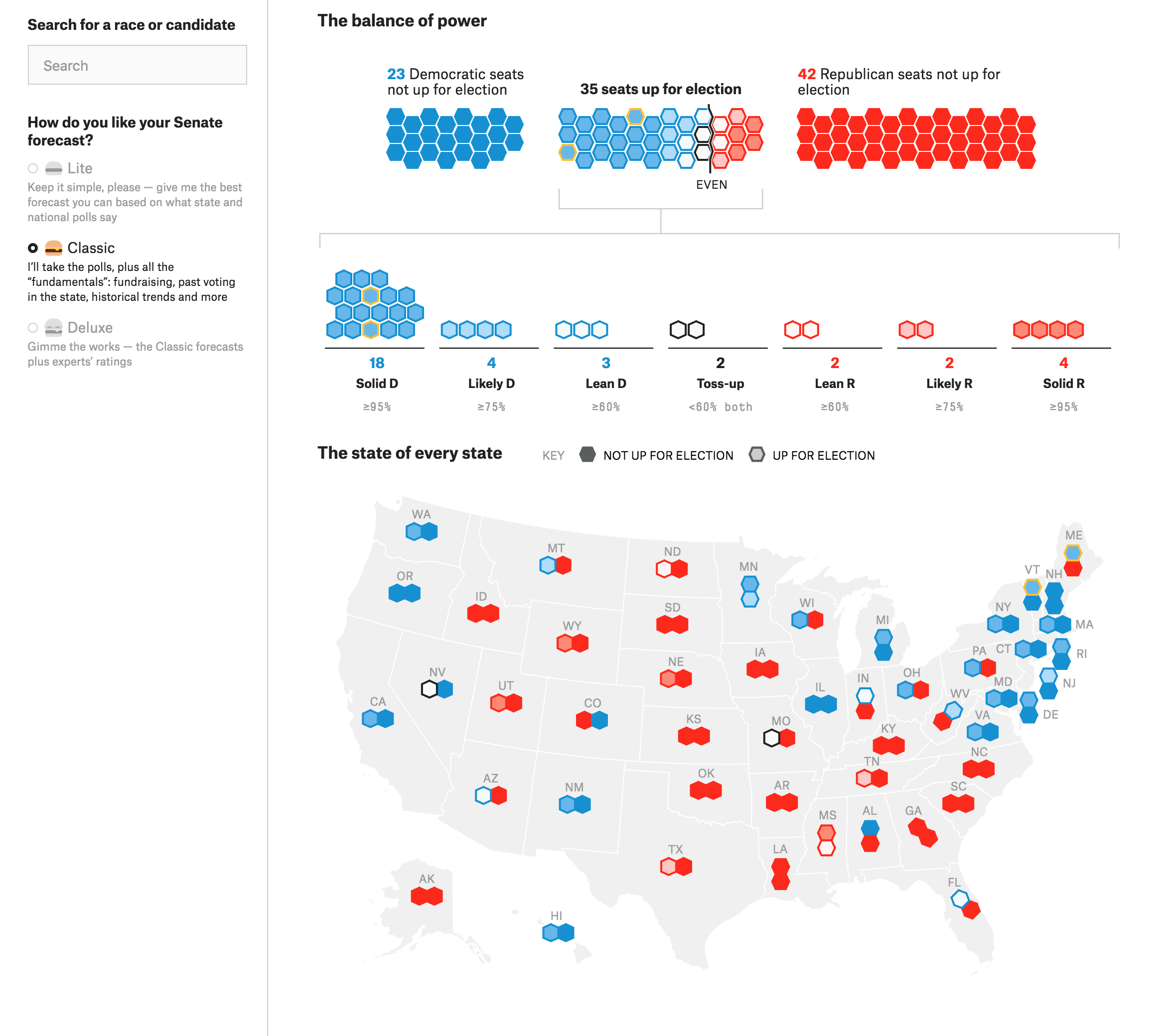
I have some ideas about how this type of data could be displayed differently. But that will probably be a topic for another day. I do like, however, how those seats up for election are divided into their different categories.
Unfortunately my internet was down this morning and so I don’t have time to compare FiveThirtyEight to other sites. So let’s just wrap this up.
Overall, what this all means is that you need to go vote. Polls and modelling and guesswork is all for nought if nobody actually, you know, votes.
Credit for the poll closing time map goes to Astead W. Herndon and Jugal K. Patel.
Credit for the FiveThirtyEight goes to the FiveThirtyEight graphics department.

